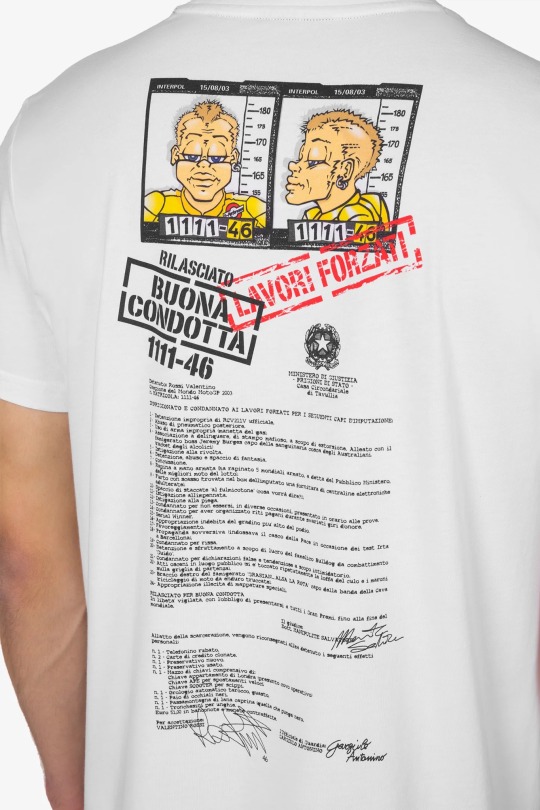#Counterfeit electronics
Explore tagged Tumblr posts
Text

Anti-Counterfeit Solutions in the Electronics Industry
The infiltration of counterfeit electronics poses serious threats to consumer safety, brand reputation, and innovation. In response to these challenges, the electronics industry is actively embracing anti-counterfeit solutions to safeguard its products and maintain the integrity of its supply chain.
0 notes
Text
Applications of QCM Technology in Engineering and Manufacturing
The following is a short list of applications of QCM technology in engineering, manufacturing and industrial process monitoring. The list is not in chronological order. In certain cases, publicly available material from clients is shown. More information on each application is available upon request. Most applications are documented in the present blog. Counterfeit chip detection Health…

View On WordPress
#CAD#CAE#Complexity#complexity management#Computer Aided Engineering#counterfeit electronics#Engineering#fragility#manufacturing#model validation#multi-physics#resilience#Structural Health Management#test data#vulnerability
0 notes
Text
Counterfeit Mitigation Component Program - Resion
Protect Your Assets with Resion's Counterfeit Mitigation Component Program! We are well aware of industry problems and offer the best solutions to tackle them. We specialize in providing exceptional supply chain solutions for industries such as aerospace, military, defense, and medical. Call us now at 516-742-6300 to learn more about what we can do for you!
#Counterfeit Mitigation Component Program#X-Ray Testing Electronics Components#Electronics RoHS Testing Services#Electronics Components Life Cycle Management#Aerospace Electronic Components Suppliers
0 notes
Link
Using BIRS, Artificial Intelligence, Machine Learning, Fraud Detection, and Proprietary Algorithms, we can track real-time whether goods and materials are genuinely destructed and recycled.
#Paper Waste Reduction#dubai municipality approved#Food Waste Recycling#Automotive parts recycling in Dubai#Counterfeit items recycling Dubai#Electronics recycling in Dubai#Packaged food/drinks recycling#Pharmaceutical waste recycling in UAE#Brand Protection in UAE#R2 Certified in UAE
0 notes
Text
The Role of Blockchain in Supply Chain Management: Enhancing Transparency and Efficiency

Blockchain technology, best known for powering cryptocurrencies like Bitcoin and Ethereum, is revolutionizing various industries with its ability to provide transparency, security, and efficiency. One of the most promising applications of blockchain is in supply chain management, where it offers solutions to longstanding challenges such as fraud, inefficiencies, and lack of visibility. This article explores how blockchain is transforming supply chains, its benefits, key use cases, and notable projects, including a mention of Sexy Meme Coin.
Understanding Blockchain Technology
Blockchain is a decentralized ledger technology that records transactions across a network of computers. Each transaction is added to a block, which is then linked to the previous block, forming a chain. This structure ensures that the data is secure, immutable, and transparent, as all participants in the network can view and verify the recorded transactions.
Key Benefits of Blockchain in Supply Chain Management
Transparency and Traceability: Blockchain provides a single, immutable record of all transactions, allowing all participants in the supply chain to have real-time visibility into the status and history of products. This transparency enhances trust and accountability among stakeholders.
Enhanced Security: The decentralized and cryptographic nature of blockchain makes it highly secure. Each transaction is encrypted and linked to the previous one, making it nearly impossible to alter or tamper with the data. This reduces the risk of fraud and counterfeiting in the supply chain.
Efficiency and Cost Savings: Blockchain can automate and streamline various supply chain processes through smart contracts, which are self-executing contracts with the terms of the agreement directly written into code. This automation reduces the need for intermediaries, minimizes paperwork, and speeds up transactions, leading to significant cost savings.
Improved Compliance: Blockchain's transparency and traceability make it easier to ensure compliance with regulatory requirements. Companies can provide verifiable records of their supply chain activities, demonstrating adherence to industry standards and regulations.
Key Use Cases of Blockchain in Supply Chain Management
Provenance Tracking: Blockchain can track the origin and journey of products from raw materials to finished goods. This is particularly valuable for industries like food and pharmaceuticals, where provenance tracking ensures the authenticity and safety of products. For example, consumers can scan a QR code on a product to access detailed information about its origin, journey, and handling.
Counterfeit Prevention: Blockchain's immutable records help prevent counterfeiting by providing a verifiable history of products. Luxury goods, electronics, and pharmaceuticals can be tracked on the blockchain to ensure they are genuine and have not been tampered with.
Supplier Verification: Companies can use blockchain to verify the credentials and performance of their suppliers. By maintaining a transparent and immutable record of supplier activities, businesses can ensure they are working with reputable and compliant partners.
Streamlined Payments and Contracts: Smart contracts on the blockchain can automate payments and contract executions, reducing delays and errors. For instance, payments can be automatically released when goods are delivered and verified, ensuring timely and accurate transactions.
Sustainability and Ethical Sourcing: Blockchain can help companies ensure their supply chains are sustainable and ethically sourced. By providing transparency into the sourcing and production processes, businesses can verify that their products meet environmental and social standards.
Notable Blockchain Supply Chain Projects
IBM Food Trust: IBM Food Trust uses blockchain to enhance transparency and traceability in the food supply chain. The platform allows participants to share and access information about the origin, processing, and distribution of food products, improving food safety and reducing waste.
VeChain: VeChain is a blockchain platform that focuses on supply chain logistics. It provides tools for tracking products and verifying their authenticity, helping businesses combat counterfeiting and improve operational efficiency.
TradeLens: TradeLens, developed by IBM and Maersk, is a blockchain-based platform for global trade. It digitizes the supply chain process, enabling real-time tracking of shipments and reducing the complexity of cross-border transactions.
Everledger: Everledger uses blockchain to track the provenance of high-value assets such as diamonds, wine, and art. By creating a digital record of an asset's history, Everledger helps prevent fraud and ensures the authenticity of products.
Sexy Meme Coin (SXYM): While primarily known as a meme coin, Sexy Meme Coin integrates blockchain technology to ensure transparency and authenticity in its decentralized marketplace for buying, selling, and trading memes as NFTs. Learn more about Sexy Meme Coin at Sexy Meme Coin.
Challenges of Implementing Blockchain in Supply Chains
Integration with Existing Systems: Integrating blockchain with legacy supply chain systems can be complex and costly. Companies need to ensure that blockchain solutions are compatible with their existing infrastructure.
Scalability: Blockchain networks can face scalability issues, especially when handling large volumes of transactions. Developing scalable blockchain solutions that can support global supply chains is crucial for widespread adoption.
Regulatory and Legal Considerations: Blockchain's decentralized nature poses challenges for regulatory compliance. Companies must navigate complex legal landscapes to ensure their blockchain implementations adhere to local and international regulations.
Data Privacy: While blockchain provides transparency, it also raises concerns about data privacy. Companies need to balance the benefits of transparency with the need to protect sensitive information.
The Future of Blockchain in Supply Chain Management
The future of blockchain in supply chain management looks promising, with continuous advancements in technology and increasing adoption across various industries. As blockchain solutions become more scalable and interoperable, their impact on supply chains will grow, enhancing transparency, efficiency, and security.
Collaboration between technology providers, industry stakeholders, and regulators will be crucial for overcoming challenges and realizing the full potential of blockchain in supply chain management. By leveraging blockchain, companies can build more resilient and trustworthy supply chains, ultimately delivering better products and services to consumers.
Conclusion
Blockchain technology is transforming supply chain management by providing unprecedented levels of transparency, security, and efficiency. From provenance tracking and counterfeit prevention to streamlined payments and ethical sourcing, blockchain offers innovative solutions to long-standing supply chain challenges. Notable projects like IBM Food Trust, VeChain, TradeLens, and Everledger are leading the way in this digital revolution, showcasing the diverse applications of blockchain in supply chains.
For those interested in exploring the playful and innovative side of blockchain, Sexy Meme Coin offers a unique and entertaining platform. Visit Sexy Meme Coin to learn more and join the community.
#crypto#blockchain#defi#digitalcurrency#ethereum#digitalassets#sexy meme coin#binance#cryptocurrencies#blockchaintechnology#bitcoin#etf
284 notes
·
View notes
Text
six of crows in pjo:
kaz brekker — son of mercury (roman)
powers:
ability to manipulate locks, deadbolts, touch/face identification on devices, etc. can also correctly guess pin numbers, security questions, captchas, etc.
money is drawn to him — loose change, wallets, credit cards, etc. he can also create small amounts of legitimate-looking counterfeit currency from any country from a provided example.
is gifted at persuasion and deception, and can haggle/bargain effectively to achieve his desired outcome.
inej ghafa — daughter of nemesis (roman)
powers:
opponents are also similarly injured when attacking/striking her (ie. arrow ricochets back into its shooter, sword shatters and cuts its wielder, etc.). the severity of the retributive attack is always equal to what inej receives initially
ability to alter someone's luck/fortune — can change good luck to bad and vice-versa, but only if they deserve it
always has perfect balance, whether it be in battle, on a high-wire, upside-down in a handstand, etc.
jesper fahey — son of apollo (greek)
powers:
perfect aim when shooting a firearm, bow, crossbow, slingshot, etc.
can put curses in the form of disease or sickness on his ammunition. whoever is shot will be plagued by the disease until the sun sets
can 'see' into the immediate future for certain minor outcomes (he would describe it as more of a 'divine hunch'), such as in blackjack, three card monty, roulette, rolling a dice, flipping a coin, etc.
nina zenik — daughter of hecate (greek)
powers:
can manipulate the mist to cast glamours/illusions upon people to make them appear different and trick both mortal and non-mortals alike
has the innate ability for magic and can cast any spell she's capable of; the power and effectiveness of the spell depends on her confidence and health
can control and summon certain types of dead, such as spirits, ghosts, or souls of the damned (necrokinesis)
matthias helvar — son of mars (roman)
powers:
higher stamina, speed, and strength than the average demigod. has faster reflexes and can dodge/parry otherwise lethal attacks that would kill/injure anyone else.
able to perfectly wield any weapon he chooses.
can bond and commune with wolves, mars's sacred animal.
wylan van eck — son of hephaestus (greek)
powers:
can create small sparks and explosions with his hands like lit gunpowder or firecrackers/fireworks
can detonate explosives such as grenades, landmines, bombs etc. from a range of 1500-2000 feet by reaching out through a form of telekinesis and triggering them. can similarly disarm any explosive
innate understanding of mechanics and electronics.
#pjo#six of crows#kaz brekker#inej ghafa#jesper fahey#nina zenik#matthias helvar#wylan van eck#headcanon#soc fandom#soc headcanon#i didnt have much for matthias im so sorry matthias#these are all my opinion they are not canon#chb#camp half blood#camp jupiter#inej kaz and matthias just seem more roman than greek yk#jesper nina and wylan would have a blast at chb#pjo headcanon
110 notes
·
View notes
Text
Your Printer is (Probably) a Snitch
In these bewildering times you might want to put up flyers or posters around a neighborhood, or mail a strongly-worded letter to someone. You might be scared of reprisals and wish to do that sort of thing anonymously, but it turns out that governments would prefer that they be able to track you down anyway.
In the early 2010s, a few different innovations were making their way into high-end scanners and printers. One was the EURION constellation, a set of dots that you'll recognize in the constellations on Euro notes or in the distribution of the little numeral 20 speckled around the back of a twenty-dollar bill. Scanners are programmed to look for dots in exactly that pattern and refuse to scan the paper that those dots are on. Can't make a copy of it! Can't scan it in. We'll get back to that.

The other innovation are **tracking dots**. The Electronic Frontier Foundation (EFF) estimates that in 2025, basically every color laser printer on the market embeds a barely-visible forensic code on each of its printouts, which encodes information about the printer and its serial number. (Maybe more data too - I don't have all the details.) Maybe you remember Reality Winner, who leaked classified intelligence to journalists? They received high quality copies (maybe originals) of the documents that were leaked. When officials were able to examine them, they were able to combine regular IT forensics ("how many users printed documents on these dates, to printers of this make & model") and work backwards from the other end, to get a narrow list of suspects.
To defeat those signatures, you either need to use a printer that doesn't embed those features (Challenging! The EFF says basically all printers do this now) or you need to be careful to employ countermeasures like this Python tool. The tool can spray lots of nonsense codes into a PDF that make forensic extraction harder (or impossible).
What does this have to do with the EURion constellation? Well, before anyone can even start to extract little invisible yellow dots from your poster... they have to scan it into their system. And their very law-abiding scanner -- unless it's owned by an agency that fights counterfeiting like the Secret Service does -- probably doesn't have its EURion brainwashing disabled. So when they go to scan your poster or strongly-worded letter, the EURion constellation on it probably stops them from doing it.

#EURion#steganography#printers and scanners#tracking#cybersecurity#sigils#anonymity#electronic frontier foundation
12 notes
·
View notes
Text

Hydrogen bonding discovery could transform the use of glowing properties in organic materials
New research from the University of St Andrews has uncovered how hydrogen bonds can enhance the phosphorescence efficiency and versatility of organic luminescent materials, potentially transforming fields such as imaging, anti-counterfeiting, and electronics. The research, led by Dr. Sen Wu, Dr. Tao Wang and Professor Eli Zysman-Colman from the School of Chemistry at St Andrews, and published in CCS Chemistry, reveals a major advancement in understanding how hydrogen bonding can improve the performance and adaptability of organic room-temperature phosphorescence (RTP) materials. By harnessing hydrogen bonds, these light-emitting materials, which glow after being exposed to light, could open new possibilities in areas such as imaging, data storage, and anti-counterfeiting technologies.
Read more.
#Materials Science#Science#Hydrogen#Chemical bonding#Organic materials#Optics#Phosphorescence#University of St Andrews
16 notes
·
View notes
Text
North Korean hackers have stolen the equivalent of billions of dollars in recent years and the nation is seeking to amass even greater wealth through illicit means, experts told DW.
Hackers belonging to the Lazarus Group — a notorious North Korean crypto theft ring — stole a record $1.5 billion (some €1.37 billion) in digital tokens from Dubai-based cryptocurrency exchange ByBit in late February. The company said the hackers had accessed its digital wallet for Ethereum, the second-largest electronic currency after Bitcoin.
Binance News, a new platform operated by cryptocurrency exchange firm Binance, reported last month that North Korea now has some 13,562 Bitcoins, the equivalent of $1.14 billion. Bitcoin is the world's oldest and best known cryptocurrency, often compared with gold due to its alleged resistance to inflation. Only the US and Great Britain have greater reserves of the currency, Binance News said, citing crypto data provider Arkham Intelligence.
"Let's not mince words — [North Korea] achieved this through theft," Aditya Das, an analyst at cryptocurrency research firm Brave New Coin in Auckland, New Zealand, told DW.
"Global policing agencies like the FBI have publicly warned that North Korean state-sponsored hackers are behind numerous attacks on cryptocurrency platforms," he added.
Hackers use social engineering against crypto firms
Despite those warnings, however, crypto firms are still being robbed and North Korean hackers are becoming increasingly sophisticated, the analyst said.
"North Korea employs a wide range of cyberattack techniques, but they've become especially known for their skill in social engineering," said Das.
"Many of their operations involve infiltrating employee hardware, then using that access to breach internal systems or lay traps from the inside."
The hacker's primary targets are crypto startups, exchanges and decentralized finance (DeFi) platforms due to their "often under-developed security protocols," he said.
Recovery of funds 'extremely rare'
Elite North Korean hackers tend to take their time when infiltrating a legitimate global organization, often by impersonating venture capitalists, recruiters or remote IT workers to build up trust and breach firms' defenses.
"One group, Sapphire Sleet, lures victims into downloading malware disguised as job applications, meeting tools or diagnostic software — essentially turning victims into their own attack vectors," Das said.
Once crypto has been stolen, Das says recovery is "extremely rare." Cryptocurrency systems are designed to make transactions irreversible and striking back against North Korean operatives "is not a viable option because these are nation-state actors with top-tier cyber defenses."
Kim Jong Un's regime 'saved' by cryptocurrency theft
Park Jung-won, a professor of law at Dankook University, said North Korea previously relied on risky transactions — such as smuggling narcotics and counterfeit goods or supplying military instructors to African nations — to earn illicit funds.
The legal expert says the advent of cryptocurrency "has been a huge opportunity" for dictator Kim Jong Un.
"It is probably fair to say that given the way the world was cracking down on Pyongyang's smuggling efforts, crypto has saved the regime," Park told DW. "Without it, they would have been completely without funds. They know that and they have invested heavily in training the best hackers and getting them up to a very high level of skill."
"The money that they are stealing is going straight to the government and the assumption is that it is being spent on weapons and greater military technology as well as the Kim family," according to Park.
North Korea immune to international pressure
Park does not believe that outside pressure would force North Korea to end hacking attacks.
"For Kim, the survival of his dynasty is the most important priority," the law professor said.
"They have become accustomed to this source of revenue, even if it is illegal, and they will not change," he added. "There is no reason for them to suddenly start abiding by international law and there is no way to apply more pressure."
Das agrees there are few tools available to influence North Korea. He says companies need to do everything in their power to avoid becoming the next victim.
"Best practices like secure-by-design smart contracts, constant internal verification and social engineering awareness are essential if the industry wants to stay ahead," he said.
Crypto firms need universal security standards
There's growing momentum for sector-wide information sharing which would help crypto firms detect North Korean tactics and avert attacks, but Das warns that crypto remains "fragmented" because there is no universal security standard. Also, North Korean hackers are good at turning security tools against their users, according to the analyst.
"In the Bybit case, the attackers exploited Safe, a multi-signature wallet system meant to enhance security. Ironically, this added security layer became the very exploit they used," he said.
And in practice, Das added, "some firms still treat security as an afterthought."
"From my experience, teams often prioritize shipping fast over building secure systems and until that changes, the space will remain vulnerable," Das said.
#nunyas news#have to wonder what would happen#if all of a sudden a bunch of countries#started selling their crypto off#would the market tank or no
8 notes
·
View notes
Text


Vale's 2003 Champion T-shirt (front):
James Brown (whose initials are the same as Jeremy Burgess), author of the soundtrack to the film “Blues Brothers” (Vale’s favorite film).
And “HE SAW THE LIGHT!!!”


Vale's 2003 Champion T-shirt (back):
Prisoner: Rossi Valentino
MotoGP World Champion 2003
Registration Number: 1111-46
IMPRISONED AND SENTENCED TO HARD LABOR FOR THE FOLLOWING CHARGES:
1. Improper detention of official RC211V.
2. Rear tire abuse.
3. Improper use of a weapon (throttle grip).
4. Association with a mafia-style criminal organization for extortion. Allied with the infamous boss Jeremy Burgess, the head of the bloodthirsty Australian gang (the alcohol racket).
5. Incitement to rebellion.
6. Possession, abuse, and distribution of fantasy.
7. Extortion.
8. Armed robbery (allegedly robbed 5 world champions at gunpoint, according to the Prosecutor, of the finest motorcycles in the lot).
9. Burglary (found in the defendant's garage were tampered electronic control units).
10. Splitting lightning fast breaks (what on earth does that mean?!).
11. Incitement to wheelie.
12. Incitement to lean.
13. Sentenced for repeatedly failing to show up on time for trials.
14. Sentenced for organizing pagan rituals during several victory laps.
15. Serial Winner.
16. Unauthorized appropriation of the highest step of the podium.
17. Aiding and abetting.
18. Subversive propaganda (wore the Peace helmet during Irta tests in Barcelona).
19. Sentenced for a brawl.
20. Detention and exploitation for profit of the ravenous combat Bulldog 'Guido.'
21. Sentenced for false and tendentious statements for intimidation purposes.
22. Indecent acts in public (repeatedly touched his derrière and marbles on the starting grid).
23. Right-hand man of the infamous “GRASIAN...ALSA LA ROTA,” head of the Cava gang (recycling of tampered enduro motorcycles).
24. Illegitimate appropriation of special mappings.
RELEASED FOR GOOD BEHAVIOR
Under supervised release, with the obligation to attend all Grand Prix events until the end of the championship.
The Judge:
Dr. MANIPULITE SALVATORE
Upon release, the following personal effects are returned to the former inmate:
1 - Stolen mobile phone.
2 - Cloned credit cards.
1 - New condom.
1 - Used condom.
1 - Bunch of keys, including:
London apartment key (presumed operational hideout).
APE key for speedy getaways.
SCOOTER key for muggings.
1 - Fake, malfunctioning automatic watch.
1 - Pair of black sunglasses.
1 - Black goat wool balaclava (the prickly kind).
1 - Nail clippers.
€51.00 in counterfeit bills and coins.
For acceptance:
VALENTINO ROSSI
The Guard Officer:
GARGIULO ANTONINO
112 notes
·
View notes
Text
To a large extent, there is still much confusion regarding the creation of MONEY. Some people still think the government actually creates money as if it were in ancient times. When I say MONEY is no longer TANGIBLE, but it is VIRTUAL, many seem to fail to grasp just how much the world has changed. In ancient times, the state minted the coins AFTER 600 BC attempting to certify the weight to facilitate commerce. However, the government quickly learned that there was profit to be made, which is known as the “seigniorage,” referring to the difference between the intrinsic value of the metal and the declared value. In such a world, the state predominantly created money supply, discounting leverage from banking and counterfeiting.
Today that is about as far removed from how the economy functions as the next inhabitable planet. In the example I used that if a foreign investor buys domestic real estate, he is increasing the domestic money supply. The conversion of his local currency to the domestic currency is NOT dictated by some FIXED quantity created by the central bank. It is just electronic. Nobody actually prints anything , and the central bank does NOT even create electronic currency. It is just a book entry. Because the foreign investor is bringing in cash and buys a TANGIBLE object (real estate), the net amount of cash in the domestic supply of money increases the same when the Fed bought US bonds under QE2. Banking also LEVERAGES the economy by creating MONEY. If you have $1,000 on deposit and I borrow $1,000, we both now have accounts reflecting $1,000 each. Again, the state did NOT create that money.
It is once more a book entry. This is how a BANK PANIC will take place. You go to the bank trying to get your $1,000, but the bank actually lent it to me. As long as you do not try to take out that $1,000, everything is fine and dandy. Therefore, MONEY is not TANGIBLE, and it is purely VIRTUAL! The idea that MONEY is supposed to be some TANGIBLE object actually ended in 600 BC once government got involved and began to manufacture a profit from creating money. As long as the economy is free, then you are free to keep your wealth in whatever object you desire, be it gold or real estate. MONEY is NOT a store of value, for it has always fluctuated, rising in purchasing power in recessions (NOW) and declining in booms.
8 notes
·
View notes
Text

Comprehensive Guide on How to Measure Customer Engagement for Electronics
Dive into our comprehensive guide on measuring customer engagement for electronics. Learn essential strategies and metrics to gauge customer interaction and satisfaction effectively on Surescanr's. The ability to understand how customers interact with electronic products and brand offerings provides valuable insights that can drive product development, marketing strategies, and overall customer satisfaction.
0 notes
Text
Tristan Paynes' Biography

Tristan Laughton Payne was born into a world that took more than it ever gave. The streets of London in the 1980s weren’t kind to children, especially not those growing up in the forgotten corners of the city—the post-industrial wastelands, the crumbling council flats, the neighborhoods where the police only came after the smoke cleared.
He had a twin brother, Remy, and a younger sister, Briana. Together, they learned early what silence meant when it came from an empty stomach, what bruises looked like when they weren’t from playground scraps, and how to hide things from neighbors and schoolteachers so they wouldn’t be taken away. Their mother, Andrea Payne, was a ghost long before she was dead—lost in a fog of cheap gin, cigarette smoke, and bitter regret. Their father had walked out one night and never looked back. No note. No explanation. Just a front door left swinging in the wind.
They were forgotten by everyone but each other.
Briana was always sick—some kind of condition no one could ever name because they couldn’t afford to take her to a proper hospital. She spent more days in bed than out of it, and even on her good days, her smile was weak, her frame bird-boned. Tristan did what he could to keep her comfortable, while Remy ran errands and Andrea drank herself into oblivion.
Money didn’t come in unless the boys brought it. Tristan, the more disciplined of the two, picked up under-the-table jobs—fixing things, carrying packages, doing favors for men with names they never repeated at home. Remy drifted, quick to earn and quicker to burn through it, gambling what little they had or pissing it away chasing some shortcut out of the gutter.
Still, they both tried. Every pound they scraped together went toward food, bills, and medicine that never worked.
Andrea didn’t care. As long as there was booze on the table and someone to blame, she was content. She resented Tristan most of all—not for what he was, but for what he wasn’t: obedient, soft, broken. He wasn’t hers to control, and she hated that. She called him cold, said he had his father’s eyes, but even that felt too kind. She said worse when the bottle got low.
The day Briana died—her thirteenth birthday—was the day something inside Tristan shut off for good. He’d known it was coming. He’d heard her breathing change. He’d held her hand when it stopped. And when they buried her in a plain wooden box with no priest and fewer mourners, Andrea stood at the graveside drunk, shrieking that the world had robbed her, that she was the victim. Tristan didn’t cry. Neither did Remy. They just stood there, still as gravestones themselves.
After that, it wasn’t a question of if they’d leave—it was how soon.
They worked for two years, living on instant noodles, doing jobs no one else wanted. Tristan fought bare-knuckle for money in warehouse pits. Remy ran numbers and sold counterfeit electronics. They kept their heads down, saved what they could, and when they turned eighteen, they vanished. They left everything behind—no note, no goodbye, no trace. Just two duffel bags and a one-way ticket out of the house that had never really been a home.
They bounced around for a while—Manchester, Birmingham, even a few months in Liverpool—but it was in London where fate caught up with them again, this time in the form of a man named Cain Dravik, the boss of the Viper Mob.
Tristan met Cain through a fixer who owed him a favor. Cain saw something in him: cold precision, complete focus, and a dead stare that didn’t blink when things got ugly. He offered Tristan a job—simple protection work, no questions asked. Tristan took it, and never looked back.
What followed was a slow, methodical climb through the ranks of the Mob. Tristan was never loud, never flashy. He didn’t party, didn’t show off, didn’t make promises he couldn’t keep.
But when he spoke, people listened. When something needed to be cleaned up—quietly, completely—he was the one they called. And when Cain’s circle tightened, Tristan found himself pulled in closer, until he was no longer just muscle.
He was the right hand.
Remy stayed in the life, but he floated on the fringes—always looking for the quick score, never quite stable. Eventually, he had kids, and when their mother ran off, Tristan stepped in.
He raised them like they were his own, buying them school clothes with blood money and reading bedtime stories with calloused hands still stained from the work he did during the day.
He kept the worst of his world away from them—mostly.
Behind closed doors, Tristan’s life is hollow. He doesn’t date. Doesn’t drink much. Doesn’t sleep more than a few hours at a time. His flat is sterile, barely lived in. He cooks to keep his hands busy. He trains to stay sharp. He plays chess alone and never lets himself win. He keeps a photo of Briana in his wallet and hasn’t once looked at it without feeling like he failed her.
People in the Mob talk about him in hushed tones. They say he’s more feared than Cain himself. They say his eyes are dead, that he can smell betrayal before a man even thinks it.
They call him The Pale Ghost, because by the time you see him, it’s already too late.
But those who know him—if anyone truly does—understand that he’s not heartless. Just careful. Just broken in ways no one can fix. He doesn’t trust easily. He doesn’t forgive. And he never forgets.
Tristan Payne isn’t a villain. He’s a survivor. A protector. A man who learned too young that the world doesn’t care about good intentions—only strength, only silence, only the cold edge of a blade.
He never wanted power. He never wanted blood.
But in the end, it was the only currency the world ever respected.
5 notes
·
View notes
Text
Counterfeit Mitigation Component Program
Protect your Critical Assets with the Resion’s Counterfeit Mitigation Component Program! We not only understand your problems, but we also foresaw them. As the leading independent stocking distributor of electronics parts, we have unmatched knowledge in the market. Call us now at 516-742-6300 to learn more about what we can do for you!
#Counterfeit Mitigation Component Program#X-Ray Testing Electronics Components#Electronics RoHS Testing Services
0 notes
Text
E-Stamp India Guide: How to Use E-Stamp for Real Estate Deals

E-Stamping is an electronic method of paying stamp duty, which is a mandatory tax levied on legal documents such as property sale deeds, lease agreements, and mortgage documents. This system was introduced to reduce the risks associated with counterfeit stamp papers and to streamline the documentation process.
The India e-stamp system was developed by the Stock Holding Corporation of India Limited (SHCIL), which acts as the central record-keeping agency. E-stamping ensures that the stamp duty is paid securely and transparently, offering an alternative to traditional physical stamp papers.
2 notes
·
View notes
Note
Aro's Munday's question of the week:
Imagine your character(s) are in a shopping mall. What are their first move here and/or what their reaction if they weren't here before?
(e.g. shopping at some shop, eating food at the court, play an arcade, etc.)
Snow would either head to the nearest electronics store and buy parts with counterfeit money or head behind the mall and dumpster dive for stuff she could use Nova would dumpster dive with Snow and play a game she calls "Can I make a bomb" which I hope is self-explanatory
#lilly rambles#mod lilly#munday#ooc#Don't think I ever mentioned that Nova loves explosives#These two are an absolute menace to society though
2 notes
·
View notes